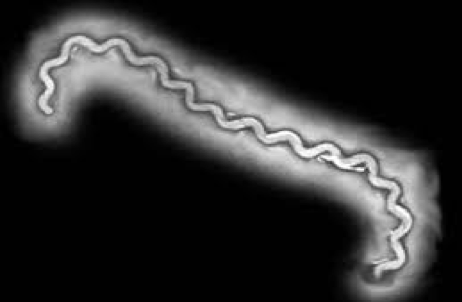Worldwide trends in leptospirosis research and serovars in dogs present in Mexico
DOI:
https://doi.org/10.29059/cvpa.v1i2.17Keywords:
Leptospirosis, dogs, zoonosesAbstract
Leptospirosis is a zoonotic disease with epidemic potential caused by the Leptospira bacteria, which has more than 200 serovars and infects several species of animals. The present review seeks to know the status of leptospirosis research in dogs, as well as to identify the serovars that exist in Mexico and finally report two positive cases of Leptospira in dogs from the municipality of Victoria, Tamaulipas. A bibliometric review was carried out through the Clarivate Web of Science database during the period from 2000 to 2023 where a total of 766 publications were found worldwide, while in Mexico there are only 16 publications. Eleven articles report 16 serovars distributed in six states of the Mexican Republic. It is concluded that the information that has been generated worldwide is limited and that Latin American countries are those with the highest risk of zoonoses.
References
Azócar-Aedo, L., & Monti, G. (2016). Meta-analyses of factors associated with leptospirosis in domestic dogs. Zoonoses and Public Health, 63, 328-336. https://doi.org/10.1111/zph.12236
Birkle, C., Pendlebury, D. A., Schnell, J., & Adams, J. (2020). Web of Science as a data source for research on scientific and scholarly activity. Quantitative Science Studies, 1(1), 363-376. https://doi.org/10.1162/qss_a_00018
CEPAL (2018). Agenda 2030 y los objetivos de desarrollo sostenible: una oportunidad para América Latina y el Caribe. Comisión Económica para América Latina y el Caribe, Naciones Unidas, Santiago de Chile. 63 p. https://www.undp.org/es/sustainable-development-goals
Costa, F., Hagan, J. E., Calcagno, J., Kane, M., Torgerson, P., Martinez-Silveira, M. S., Stein, C., Abela-Ridder, B., & Ko, A.I. (2015). Global morbidity and mortality of leptospirosis: A systematic review. PLOS Neglected Tropical Diseases, 9(9), 1-19. e0003898. https://doi.org/10.1371/journal.pntd.0003898
Dabanch, J.P. (2003). Zoonosis. Revista Chilena de Infectología, 20(1), 47-51. https://doi.org/10.4067/S0716-10182003020100008
Diario Oficial de la Federación (2013). Norma Oficial Mexicana NOM-017-SSA2-2012, Para la vigilancia epidemiológica. Secretaría de Gobernación, México. https://dof.gob.mx/nota_detalle.php?codigo=5288225&fecha=19/02/2013#gsc.tab=0
Ga, E., Won, Y., Hwang, J., Moon, S., Yeom, M., Lyoo, K., Song, D., Han, J., & Na, W. (2022). A COVID-19 vaccine for dogs prevents reverse zoonosis. Vaccines, 10(676), 1-12. https://doi.org/10.3390/vaccines10050676
Griebsch, C., Kirkwood, N., Ward, M. P., So, W., Weerakoon, L., Donahoe, S., & Norris, J. M. (2022). Emerging leptospirosis in urban Sydney dogs: a case series (2017-2020). Australian VeterinaryJournal Volume, 100(5), 190-200. https://onlinelibrary.wiley.com/doi/pdf/10.1111/avj.13148
Gutiérrez, L., Mendoza, J., Rangel, A. B., Tapia, G., Bernad, M. J., & Sumano, H. (2019). Outpatient clinical trial in dogs with leptospirosis treated with enrofloxacin hydrochloride-dihydrate (ENRO-C). Frontiers in Veterinary Science, 6, 360. https://doi.org/10.3389/fvets.2019.00360
Hernández-Ramírez, C. V., Gaxiola-Camacho, S. M., Osuna-Ramirez, I., Enríquez-Verdugo, I.,Castro del Campo, N., & López-Moreno, H. S. (2017). Prevalence and risk factors associated with serovars of Leptospira in dogs from Culiacan, Sinaloa. Veterinaria México OA, 4(2), 1-12. https://doi.org/10.21753/vmoa.4.2.369
Hernández-Ramírez, C. Gaxiola-Camacho, S., Enriquéz-Verdugo, I., Rivas-Llamas, R., & Osuna-Ramírez,I. (2020). Serovariedades de Leptospira y riesgos de contagio en humanos y perros de la ciudad de Culiacán, Sinaloa, México. Abanico Veterinario, 10, 1-16. https://doi.org/10.21929/abavet2020.40
INEGI (2021). Encuesta nacional de bienestar autorreportado 2021 ENBIARE, Nota Técnica. Instituto Nacional de Estadística y Geografía, Ciudad de México. 24 p. https://www.inegi.org.mx/contenidos/programas/enbiare/2021/doc/enbiare_2021_nota_tecnica.pdf
Jiménez-Coello, M., Vado-Solis, I., Cárdenas-Marrufo, M. F., Rodríguez-Buenfil, J. C., & Ortega-Pacheco, A. (2008). Serological survey of canine leptospirosis in the tropics of Yucatan Mexico using twodifferent tests. Acta Tropica, 106, 22-26. https://doi.org/10.1016/j.actatropica.2007.12.011
Jiménez-Coello, M., Ortega-Pacheco, A., Guzman-Marin, E., Guiris-Andrade, D. M., Martinez-Figueroa,L., & Acosta-Viana, K. Y. (2010). Stray dogs as reservoirs of the zoonotic agents Leptospira interrogans, Trypanosoma cruzi, and Aspergillus spp. in an urban area of Chiapas in Southern Mexico.Vector-Borne and Zoonotic Diseases, 10(2), 135-141. https://doi.org/10.1089/vbz.2008.0170
Lee, H.S., Guptill, L., Johnson, A. J., & Moore, G. E. (2014). Signalment changes in canine leptospiros is between 1970 and 2009. Journal of Veterinary Internal Medicine, 28, 294-299. https://doi.org/10.1111/jvim.12273
Levett, P. N. (2001). Leptospirosis. Clinical Microbiology Reviews, 14, 296-326. https://doi.org/10.1111/jvim.12273
Lugo-Chávez, B. L., Velasco-Rodríguez, L. C., Canales-Velásquez, G., Velázquez-Hernández, J. F., & Herrera-Huerta, E. V. (2015). Detección de anticuerpos antileptospira en una población vulnerable del municipio de Ixhuatlancillo, Veracruz. Revista Médica del Instituto Mexicano del Seguro Social, 53(2), 158-163. https://www.medigraphic.com/cgi-bin/new/resumen.cgi?IDARTICULO=56564
Martínez, M. L., Loffler, S. G., Romero, G. N., & Brihuega, B. F. (2018). Diferenciación de serovares de leptospiras patógenas mediante PCR del gen ligB y secuenciación. Revista Argentina de Microbiología, 50(2), 126-130. https://www.medigraphic.com/cgi-bin/new/resumen.cgi?IDARTICULO=56564
Morán-Rodríguez, L. E. (2012). Proponen solución al problema de los perros callejeros. Ciencia UNAM, 9. https://ciencia.unam.mx/leer/109/Proponen_solucion_al_problema_de_los_perros_callejeros
Ortega-Pacheco, A., Guzmán-Marín, E., Acosta-Viana, K. Y., Vado-Solís, I., Jiménez-Delgadillo, B., Maria Cárdenas-Marrufo, M., Pérez-Osorio, C., Puerto-Solís, M., & Jiménez-Coello, M. (2017). Serological survey of Leptospira interrogans, Toxoplasma gondii and Trypanosoma cruzi in free roaming domestic dogs and cats from a marginated rural area of Yucatan Mexico. Veterinary Medicine and Science, 3(1), 40-47. https://doi.org/10.1002%2Fvms3.55
Ortega-González, C. N., Martínez-Herrera, D. I., Ortiz-Ceballos, G. C., Pardío-Sedas, V. T., Villagómez-Cortés,J. A., Flores-Primo, A., Vázquez-Luna, D., Torres-Barranca, J. I., & Meléndez-Valadez, P. (2018).Association between leptospirosis in domiciled dogs and in their owners in Veracruz-Boca del Rio, Mexico. Agrociencia, 52, 67-79. https://doi.org/10.22579/20112629.161
Reagan, K. L., & Sykes, J. E. (2019). Diagnosis of canine leptospirosis. Veterinary Clinics of North America:Small Animal Practice, 49(4), 719-731. https://doi.org/10.1186/s12917-018-1547-4
Sáez-Olmo, J., Caravaca-Llamas, C., & Molina-Cano, J. (2023). La familia multiespecie: cuestión y reto multidisciplinar. Aposta Revista de Ciencias Sociales, 97, 8-27. http://www.apostadigital.com/revistav3/hemeroteca/jsaezol.pdf
Samet, L. E., Vaterlaws-Whiteside, H., Harvey, N. D., Upjohn, M. M., & Casey, R. A. (2022). Exploringand developing the questions used to measure the human–dog bond: New and Existing Themes. Animals, 12, 805. https://doi.org/10.3390/ani12070805
Sepúlveda-Montes, A., Santiago-Dimas, J., & Preciado-Rodríguez, F. J. (2002). La rata y el perro, importantes vectores de la leptospirosis en explotaciones pecuarias de Cd. Guzmán, Jalisco. Revista Cubana de Medicina Tropical, 54(1), 21-23. http://scielo.sld.cu/pdf/mtr/v54n1/ mtr05102.pdf
Schuller, S., Francey, T., Hartmann, K., Hugonnard, M., Kohn, B., Nally, J. E., & Sykes, J. (2015). European consensus statement on leptospirosis in dogs and cats. Journal of Small Animal Practice, 56, 159-179. https://doi.org/10.1111/jsap.12328
Smith, A. M., Stull, J. W., Evason, M. D., Weese, J. S., Wittum, T. E., Szlosek, D., & Goncalves, A. A. (2021). Investigation of spatio-temporal clusters of positive leptospirosis polymerase chain reactiontest results in dogs in the United States, 2009 to 2016. Journal of Veterinary Internal Medicine,5, 1355-1360. https://doi.org/10.1111/jvim.16060
Sohn-Hausner, N., Kmetiuk, L.B., & Biondo, A.W. (2023). One health approach to Leptospirosis:human-dog seroprevalence associated to socioeconomic and environmental risk factors in Brazil over a 20-Year Period (2001-2020). Tropical Medicine and Infectious Disease, 8 (356),1-15. https://doi.org/10.3390/tropicalmed8070356
Stull, J.W., Evason, M., Weese, J. S., Yu, J., Szlosek, D., & Smith, A. M. (2022). Canine leptospirosisin Canada, test-positive proportion and risk factors (2009 to 2018): A cross-sectional study. PLoS ONE, 17(6), 1-15. e0270313. https://doi.org/10.1371/journal.pone.0270313
Sykes, J. E., Reagan, K.L., Nally, J. E., Galloway, R. L., & Haake, D. A. (2022). Role of diagnosticsin epidemiology, management, surveillance, and control of leptospirosis. Pathogens, 11,395. https://doi.org/10.3390/pathogens11040395
Sykes, J. E., Francey, T., Schuller, S., Stoddard, R. A., Cowgill. L. D., & Moore, G. E. (2023). Updated ACVIM consensus statement on leptospirosis in dogs. Journal of Veterinary Internal Medicine,37, 1966-1982. https://doi.org/10.1111/jvim.16903
Vado-Solís, I., Cárdenas-Marrufo, M. F., Jiménez-Delgadillo, B., Alzina-López, A., Laviada-Molina,H., Suarez-Solís, V., & Zavala-Velázquez, J. E. (2022). Clinical-epidemiological study of Leptospirosis in humans and reservoirs in Yucatán, México. Revista do Instituto de Medicina Tropical de São Paulo, 44 (6), 335-340. https://www.scielo.br/j/rimtsp/a/Nz43S6hvZVVkbTLRxCJrx4K/?format=pdf&lang=en
White, A. M., Zambrana-Torrelio, C., Allen, T., Rostal, M. K., Wright, A. K., Ball, E. C., Daszak, P., & Karesh, W. B. (2017). Hotspots of canine leptospirosis in the United States of America. The Veterinary Journal, 222, 29-35. https://doi.org/10.1016/j.tvjl.2017.02.009
WOAH (2023). Stepping up dog population management to achieve rabies elimination. World Organisation for Animal Health. https://www.woah.org
World Health Organization (2003). Human leptospirosis: guideline for diagnosis, surveillanceand control. https://www.who.int/publications/i/item/human-leptospirosis-guidance-for-diagnosis-surveillance-and-control

Published
How to Cite
Issue
Section
License
Copyright (c) 2024 Ciencias Veterinarias y Producción Animal

This work is licensed under a Creative Commons Attribution-NonCommercial-ShareAlike 4.0 International License.
Accepted 2024-01-23
Published 2024-01-31







